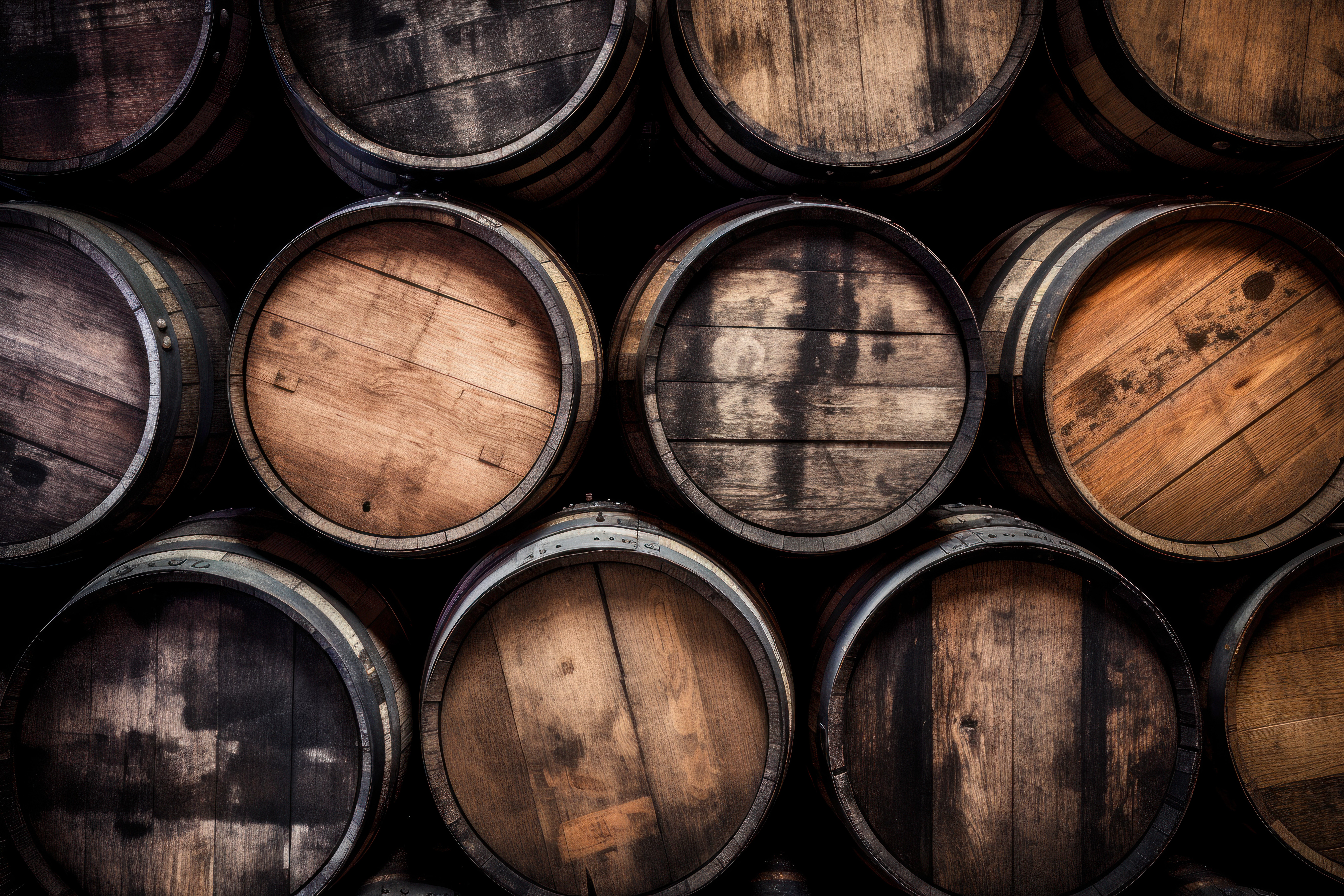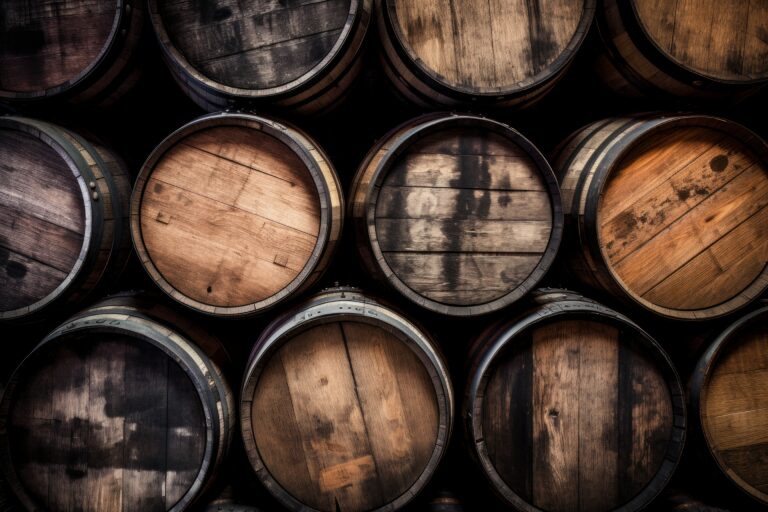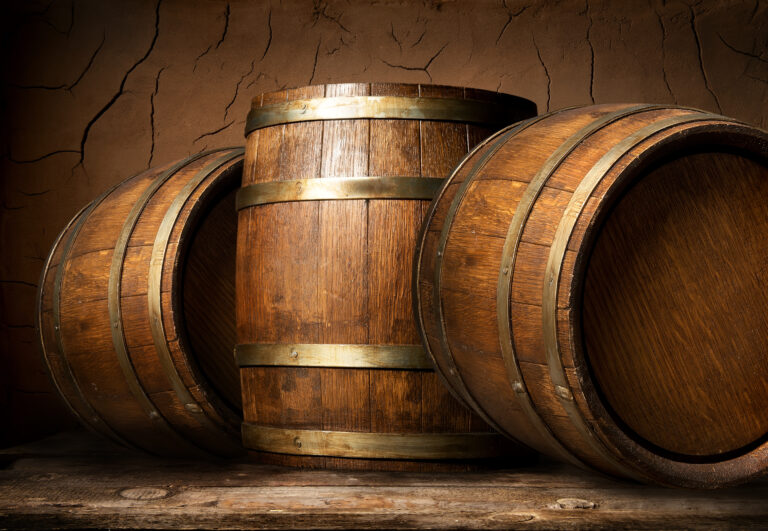Want to knock some of the char off your whiskey barrels? You’ve come to the right place. That blackened layer inside the barrel is what gives whiskey its deep color and classic flavor during the aging process. But after a few runs, that char can get a bit much. Recharring, or removing some of the old char, lets you reuse your barrels and create new flavor profiles. It’s a bit of a tough job, but follow these steps and you’ll be enjoying the rewards in no time. Grab your safety gear and a charring torch—let’s do this!
Why Char Builds Up in Whiskey Barrels
As whiskey ages, tiny particles of char flake off the inside of the barrel and dissolve into the liquid. This is what gives aged whiskey its beautiful amber color and smoky, spicy flavors. But too much of a good thing can make your whiskey taste burnt and bitter.
Over time, that inner layer of charcoal breaks down, and tiny bits fall into the whiskey. The alcohol actually pulls flavor compounds from the char into the liquid. This char extraction is what causes the color change, while flavors like vanilla and spice come from compounds like vanillin and syringaldehyde.
While essential for flavor, if left unchecked, these char particles can overwhelm other flavors. That’s why most distilleries use a barrel management system to remove excess char. By occasionally dumping the barrels and straining out the particles, distillers can control how much char flavor ends up in the final product.
It’s a fine line to walk, but meticulous barrel care is what separates an award-winning whiskey from a harsh, over-charred one. Managing the char in whiskey barrels is an art form—and it’s key to creating a smooth, complex, and memorable whiskey.
The Dangers of Leaving Char in Barrels
When barrels are first used, some charred wood bits and residue remain inside. Leaving them in there during aging can lead to some seriously unpleasant flavors. Cleaning the barrels properly is a critical step.
Safety First
Char contains harmful chemicals, so you’ve got to protect yourself. Wear heavy-duty gloves, eye protection, and a mask. Make sure you scrub down the outside of the barrels before you open them to prevent any contamination.
Remove the Big Pieces
Use a stainless steel scrubber or a putty knife to scrape out the big char chunks and splinters. You can also bang the barrel on its rim over a trash can to loosen debris. Then, use a vacuum with a hose or brush attachment to clean out the inside.
Scrub the Surface
Use an abrasive sponge, scrubber, or steel wool to scour the inside, paying special attention to the croze (the groove where the barrel head fits) and the middle staves. Rinse it out thoroughly with water to flush everything out.
Clean and Rinse
Fill the barrel about a quarter of the way with a solution of water and white distilled vinegar or a special barrel wash. Seal it up and roll the barrel around to coat all the surfaces. Rinse it several times with water until the water runs clear.
Air It Out
Leave the barrels open to air dry completely to prevent musty smells from forming. Now your barrels will impart clean, oak flavors instead of char bitterness. The extra effort is absolutely worth it for a great-tasting whiskey.
Supplies You’ll Need to Remove Char
To get rid of the char in your whiskey barrels, you’ll need a few essential distilling supplies.
Safety Equipment
- Protective gloves: Thick, heat-resistant gloves to handle hot barrels and tools.
- Safety goggles: To shield your eyes from wood splinters and the chemicals you’ll be using.
- Respirator mask: A mask rated for organic vapors will protect you from harsh fumes.
Cleaning Tools
- Wire brush: A stiff wire brush is perfect for scraping out tough char deposits.
- Putty knife or paint scraper: These are great for chipping away loose char pieces.
- Steel wool: A fine grade of steel wool helps you scrub away stubborn residue.
- Burlap bags: Place these inside the barrel to collect char pieces as you work.
Chemicals
- Lye: A sodium hydroxide solution that helps break down stubborn char. Handle with extreme caution!
- Detergent: A degreasing detergent helps lift char from the wood. Look for one that’s free of dyes and fragrances.
- Isopropyl alcohol: High-strength isopropyl alcohol (91% or higher) helps dissolve char and disinfect the wood.
With the proper safety gear, tools, and chemicals, you’ll be ready to start cleaning the char from your whiskey barrels and preparing them for reuse or storage. Always work in a well-ventilated area and follow instructions carefully when handling harsh chemicals. Your diligence will pay off with barrels that are practically good as new.
Prepping the Barrel Before Char Removal
Before you can remove the char from your whiskey barrel, you need to properly prepare it. Start by rinsing out any leftover whiskey with hot water. Then, let the barrel air dry completely—this will likely take at least 2–3 days.
Once it’s dry, inspect the barrel for any cracks or holes and repair them. You want your barrel to be watertight before you start the recharring process. Tighten any loose barrel hoops and replace any damaged ones.
Next, stand the barrel upright and fill it about one-third of the way with water. Let it sit for several hours so the wood can absorb the moisture. This will cause the wood staves to swell, closing up any small cracks. Drain the water and let the barrel dry completely again.
Finally, take some medium-grit sandpaper and lightly sand the inside of the barrel to rough up the surface. This creates a “tooth” for the new char layer to grab onto. Wipe away the dust with a tack cloth, and your barrel is now prepped and ready for the charring process.
Following these simple steps ensures you’ll have a properly prepared barrel before you put a flame to the wood. Taking the time to do it right means you’ll have a barrel that’s perfect for aging more whiskey. Cheers!
Using a Wire Grill Brush to Remove Stubborn Char
A wire grill brush is a surprisingly effective tool for scrubbing off baked-on char and debris from the inside of your whiskey barrels.
Carefully insert the wire brush into the barrel and scrub in a circular motion to loosen the charred bits. Apply firm and consistent pressure as you go. Be thorough, making sure you get into all the corners and edges.
Pull the wire brush out frequently to remove the loosened char and residue. Empty the debris from the brush before you continue scrubbing. Repeat this process until the majority of the char has been removed.
For any stubborn char that remains, try dampening the area with a bit of water. Let it sit for several minutes so the water can soften the char. The wire brush should then be able to scrub it away more easily. Be sure to fully rinse and dry the barrel when you’re done scrubbing, especially before storing.
With a little elbow grease, a wire grill brush can clean even the most charred whiskey barrels. Your barrel will be clean as new, ready to impart flavor to your next batch.
Rinsing Out All Char Residue Thoroughly
Once the barrels have been emptied of whiskey, it’s time to thoroughly clean out any remaining charcoal residue. Those charred bits can impart unwanted flavors if left behind, so rinsing the barrels completely is an important step.
Scrub Away Charcoal Bits
Use a long-handled barrel brush, scrub brush, or abrasive sponge to loosen any char clinging to the inside of the barrel. Pay extra attention to the bottom and edges where bits tend to collect. Scrub in a circular motion, applying firm pressure.
Rinse and Repeat
After scrubbing, rinse the barrel with hot water. Fill it about one-third of the way, seal the bunghole, and shake it vigorously. Empty it and repeat, scrubbing again if you need to, until the water runs clear.
Final Flush
As a last step, flush the barrel with a hose on full blast for several minutes. The high-pressure water will force out any last traces of charcoal residue and leave your barrel sparkling clean inside.
Inspect and Air Dry
Once flushed, inspect the barrel’s interior to make sure all the char has been removed. Let the barrel air dry completely, upside down, before filling it again or storing it. Taking the time to thoroughly clean and rinse your used whiskey barrels will produce a better end result in your next batch of whiskey. Clean barrels mean better flavor extraction and color in the final product.
Neutralizing Odor and Disinfecting the Barrel
Once the whiskey has been drained, it’s time to neutralize any remaining odors and properly disinfect the barrels before storing or reusing them.
Cleaning the Barrels
Use hot water and a barrel cleaning solution, scrubbing off any char or residue with a long-handled barrel brush. Rinse thoroughly until the water runs clear.
Let the barrels air dry completely, then seal them to prevent recontamination before storing or reusing. You can seal the barrels by replacing the bung in the bunghole and securing the lid.
For disinfecting, create a sanitizing solution of distilled white vinegar or a commercial barrel sanitizer and water. Swish the solution around to coat the entire inside of the barrel. Let it sit for at least 30 minutes, then rinse with water.
Neutralizing Odors
To get rid of any lingering smells, try baking soda, activated charcoal, or a commercial odor absorber. Place an open container of the odor neutralizer inside the barrel and seal it. Let it sit for at least two weeks so it can fully absorb any remaining odors. Replace the odor absorber every few months to keep your barrels smelling fresh until you’re ready to fill them again.
Properly cleaning, sanitizing, and deodorizing used whiskey barrels will allow you to safely store them for extended periods or get them ready for filling with other spirits. With the right care, barrels can last for many, many years and continue to enhance the flavor of their contents.
Sealing and Storing the Barrel Properly
Now that you’ve cleaned out the inside of the barrel and made any necessary repairs, it’s time to properly seal and store it until you’re ready to refill it.
Sealing the Barrel
Apply a waterproof wood sealant or wax to the inside of the barrel using a paintbrush. Let it dry as directed. Place the barrel lid over the opening and hammer the metal hoops back into place to seal it shut.
Storing the Barrel
Store the barrel in a cool, dry area away from extreme heat or cold. A garage, shed, or basement are all good options. Place the barrel on its side with the bunghole facing down. This prevents air from getting inside. Cover the barrel with a tarp to protect it from light and dust. Check on the barrel periodically to ensure the seal is still tight and it’s in good condition.
Following these proper sealing and storage steps will help keep oxygen and contaminants out of your barrel, preserving it until you’re ready to refill and reuse it. Be sure to inspect the barrel thoroughly before refilling to make sure it’s still structurally sound and properly sealed. With the right care and maintenance, a charred oak whiskey barrel can last for years and be used for multiple batches.
FAQ: Common Questions About Removing Char
Do I need any special equipment?
You’ll definitely want protective gear like gloves, goggles, and a mask, since char particles and dust can irritate your eyes and lungs. You’ll also need basic tools like a wire brush, chisel, mallet, and a vacuum.
How do I remove the char?
Use a wire brush to loosen the char from the inside. Then use a chisel and mallet to chip away larger pieces. Vacuum up the loose char with a shop vac as you go to keep the mess to a minimum. Scrub any remaining residue with hot water and a barrel brush.
Will removing the char affect the barrel’s flavor?
Yes. Removing char will mellow the barrel’s influence on flavor over time. The barrel will still impart oakiness, but with less smokiness and spice. You might need to re-char the barrel if you want those more robust flavors.
How often should I remove char from a barrel?
For most uses, removing char every 2–4 years is typical. More frequent removal (every 6–18 months) will produce a subtler barrel influence. Less frequent removal (every 5–10 years) allows more char buildup and bolder flavors. It all depends on your preferences and how quickly char builds up.
Does removing char require barrel re-charring?
Not always. Removing char will mellow barrel flavors, but re-charring can restore robust oak and spice notes if you want them. Re-charring a barrel after de-charring will produce different flavors than the original char since the wood has already been exposed. Many distillers prefer the subtler, mellowed flavors from a de-charred barrel.
Final Thoughts
So there you have it—a straightforward process for removing those stubborn charred bits from your whiskey barrels. While it might seem like a small step, properly cleaning your barrels is key to crafting a smooth, complex spirit. Now you’re ready to fill those barrels with your mash and start the aging process. A few years from now, when you pour that first drink, you’ll appreciate the effort that went into preparing the vessel that gave your whiskey its unique flavor and rich amber glow. Here’s to patience, precision, and enjoying the fruits of your labor!







